What's New
Displaying results 4841 - 4850 of 4914

Resource | Fact Sheets,
Just over 1,500 new cases of HIV/AIDS, most involving sexual transmission, have been reported since January 1984. Surveillance data indicates that prevalence rates are low even among the most vulnerable groups. Awareness of ways to prevent HIV transmission remains high, but has not been translated to behavior change. Less than half of the at-risk population groups report consistent condom usage. Injecting drug use among some deep sea fishermen and freelance sex workers in General Santos City was unexpectedly high.
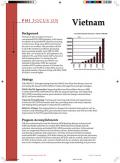
Resource | Fact Sheets,
Vietnam is still considered to have a concentrated HIV/AIDS epidemic, with almost two-thirds of reported HIV infections occurring to intravenous drug users (IDUs) and most of the rest in sex workers. The prevalence of HIV in all of the sentinel surveillance groups has been increasing steadily since 1996 (in 2000: IDUs 20%, sex workers 4.5%, STD patients 1.2%, military 0.5%, and ANC clients 0.25%), however still remaining below 1% among low risk population. Since the first case of HIV was reported in December 1990, the reported number of HIV-positive persons in Vietnam has increased to over 37,000 as of July 2001, however, the actual number of persons living with HIV/AIDS (PLHAs) is much higher.

Resource | Fact Sheets,
HIV was first detected in Cambodia during serological screening of donated blood in 1991. The first cases of AIDS were diagnosed in late 1993 and early 1994. Between 1995-1998, surveillance data from the National AIDS Program (NAP), showed a significant spread of HIV in several key populations.
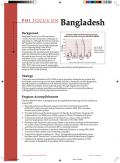
Resource | Fact Sheets,
Bangladesh is still a low HIV prevalence country, but faces tremendous challenges in remaining so. Although the first two national HIV Sentinel Surveillance rounds indicated low HIV prevalence among high risk groups such as Injecting Drug Users (IDUs), Male and Female Sex Workers and Transgenders, the simultaneously undertaken Behavioral Sentinel Surveillance (BSS) among the same groups showed very high rates of risk behavior, low condom use, low levels of risk perception and alarming levels of self-reported sexually transmitted infections (STI). FHI’s behavioral research among other high-risk groups strongly supports the BSS data and indicates that Bangladesh may not escape an HIV/AIDS epidemic.
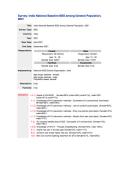
Resource | Data Sheets,
National Baseline BSS among the general population conducted in India in 2001.
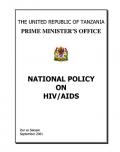
Resource | Publications,
HIV/AIDS is a major development crisis that affects all sectors. During the last two decades the HIV/AIDS epidemic has spread relentlessly affecting people in all walks of life and decimating the most productive segments of the population particularly women and men between the ages of 20 and 49 years. The increasing number of AIDS related absenteeism from workplaces and deaths reflects the early manifestation of the epidemic leaving behind suffering and grief.
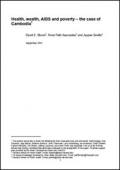
Resource | Publications,
This paper explores the nature of the HIV/AIDS epidemic in Cambodia, its impact on the country’s development and its effect on the 40 percent of Cambodians who live below the poverty line. It views AIDS within a wider health context, and explores the socio-economic factors that underlie both the epidemic’s development and the shape of the country’s response. Finally, it examines Cambodia’s options going forward, arguing that future responses will be needed along three tracks – those specific to AIDS; those specific to health; and those with a broad development focus.

Resource | Publications,
The Behavioral Surveillance survey (BSS) for HIV prevention is based on serologic sentinel surveillance survey methods used in many countries to detect the emergence of HIV and monitor epidemic trends. Behavioral surveillance surveys are systems for quantitatively assessing sexual behavior change, consisting of structured questionnaires, administered periodically to samples of target groups specific geographic areas.
This survey is the third round of the BSS conducted in the highway route of the FHI project area.

Resource | Publications,
Behavioral surveillance surveys (BSS) form an important component of integrated surveillance systems for monitoring the HIV epidemic and are included in the second generation surveillance systems recommended by UNAIDS and WHO.
This report highlights findings from female sex workers and adult males (specifically sailors and seaport workers and truckers and their assistants) from the first through the fifth waves of the BSS, conducted yearly in 1996, 1997, 1998, 1999, and 2000.
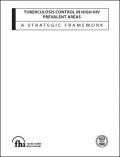
Resource | Publications,
Tuberculosis (TB) continues to be one of the most important global public health threats. The World Health Organization (WHO) estimates that the incidence of TB increased by 5 percent between 1997 and 1999, from 8 million to 8.4 million new cases. African countries severely affected by the HIV epidemic experienced a 20 percent increase in the incidence of TB; this rise is largely responsible for the TB increase globally.
The relationship between TB and HIV has been recognized since the early days of the HIV epidemic. Today HIV is known to be an important risk factor, contributing to the development of active TB from latent TB infection. A person co-infected with TB (positive PPD skin test) and HIV faces a five percent to 16 percent annual risk of developing active TB disease. HIV also makes individuals with a recent TB infection more likely to progress rapidly to active TB disease. WHO estimates that more than 10 million people worldwide live co-infected with TB and HIV, more than two-thirds of whom are in sub-Saharan Africa.





